![]()
![]()
![]()
Use LEFT and RIGHT arrow keys to navigate between flashcards;
Use UP and DOWN arrow keys to flip the card;
H to show hint;
A reads text to speech;
44 Cards in this Set
- Front
- Back
|
Middle Ages
|
Origin of French (Latin & Germanic Influences)
Written Documents • The class divisions: oratores (“those who pray”), bellatores (“those who fight”), and laborantes (“those who work”) • Literature, more and more genres emerge (not everything is religious) |
|
|
bourgeoisie
|
The emergence of the bourgeoisie near the end of the Middle Ages. NOTE: according to the class structure, a bourgeois is still part of the “laborantes” (i.e. not noble). Unlike the typical laborantes (i.e. farmers, peasants), the bourgeois is often a merchant working in cities.
|
|
|
La Sorbonne
|
university created by a theologian
Middle Ages |
|
|
"grand siècle”
|
1150-1250 during which the arts flourish (and the Sorbonne is founded)
Middle Ages |
|
|
The Guerre de 100 ans
|
the failures that mark the decline of feudalism and a move toward a national identity (i.e. a unified nation is better at defending itself)
Middle Ages |
|
|
Serments de Strasbourg
|
first document; religious works—first literature
Middle Ages |
|
|
Renaissance
|
• Wars, especially the wars with Italy during the first half of the 16th century (because they brought the Renaissance to France), and then the religious wars in the second half of the 16th century (because they show a fragmentation of religious beliefs and the intolerance towards anything but Catholicism in France)
• Invention of the printing press (effect on religious reform, move toward more print culture, etc.) • The complex relationship between imitation and innovation during this period • The bourgeoisie continues to grow |
|
|
Humanism
|
(wisdom of Antiquity allied with modern thought to enrich culture and understanding)
Renaissance |
|
|
Collège de France
|
founded by François I. This shows an increase in political power (as opposed to the Sorbonne which was founded by the church) and demonstrates an interest in other languages (like Hebrew and Greek) that were deemed heretical by the church
Renaissance |
|
|
“Il jette le cadavre sur la dame, ce qui ensanglante sa robe”
|
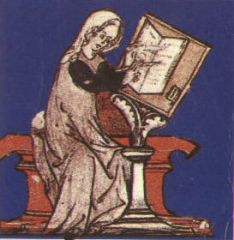
author: Marie de France
title: “Le lai du Laustic” what is happening in this scene? A jealous husband has killed the bird that his wife used as a pretext for meeting with her lover. Medieval Author |
|
|
Charles d’Orléans
|
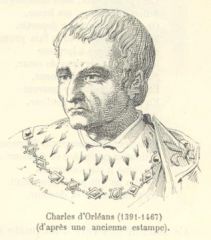
title: le printemps
genre: rondeau, personification main ideas: with the arrival of spring life renews itself (religious symbolism) son père est assassiné son épouse Isabelle meurt il est fait prisonnier par les Anglais ses Ballades et ses Rondeaux se distingue par la virtuosité de ses poèmes à forme fixe nobles |
|
|
rondeau
|
needs a refrain repeated at the beginning and end—and middle most of the time—of the poem
Charles dʼOrléans |
|
|
“figures du style”
|
personnification (“Le temps a laissé son manteau...”)
métaphore (a=b) comparaison (a is similar to b) antithèse (opposites) périphrase (saying something with several words that could have be said with one, like “Celui qui conquit la toison” instead of just saying “Jason”) |
|
|
Marie De France
|
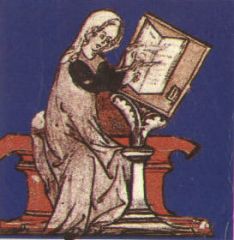
personne éduquée, de famille noble, qui connaissait le latin, l’anglais et le français,
une poétesse originaire de l’Île de France |
|
|
Le Nouvelle
|
écrites en prose
se situe dans le présent et offre donc une vision de la vie quotidienne de l'époque, de ses valeurs, et de son humour. |
|
|
L’allégorie
|
illustre un ensemble symbolique cohérent.
|
|
|
anonymous
|
title: les 15 joies de mariage
genre: nouvelle main ideas: demonstrates the misogyny that characterized so much writing during the Middle Ages. Basic plot is that all women lie and conspire to make the husband miserable. |
|
|
Christine de Pizan
|
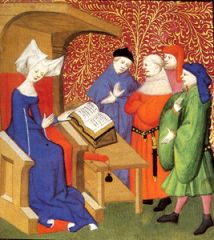
title: La Cité des Dames
genre: allégorie main ideas: 3 allegorical personages appear to Christine to give her comfort and advice on how to combat the rampant misogyny of her time. Dame Raison suggests turning their words against them through the use of poetic devices. féministe du Moyen Âge. des ballades, des rondeaux, des virelais, des complaintes. des réalités plus politiques et sociales |
|
|
Rabelais works
|

title: Gargantua
genre: satire main ideas: Gargantua accidentally puts some pilgrims in his mouth when eating a salad. Gargantua is a giant that both celebrates and satirizes humanist ideals. Renaissance Rabelais, par son utilisation propre des géants, fait une parodie de ces traditions de géants maléfiques et de géants de la propagande nationaliste. |
|
|
du Bellay
|
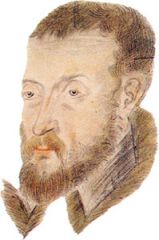
title: Heureux qui, comme Ulysse...
genre: sonnet main ideas: A poem about home-sickness (how he misses France when he is in Rome), but also about the idea of traveling/looking into other cultures (as humanists do when they read ancient writings) and apply the things you learn to your own culture. This is the same idea he talks about in the Défense et illustration de la langue française when he says that we should imitate and transform works from antiquity is the same way that the Romans imitated the Greeks. Renaissance orphelin |
|
|
Ronsard
|
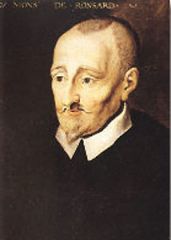
title: Ode à Cassandre
genre: Ode main ideas: life is short, seize the day. Also, we talked about the double meaning of Cassandre the real woman and Cassandre the mythological figure. |
|
|
Louise Labé
|

title: Je vis, je meurs
genre: sonnet main ideas: Love (or desire, really) is leading her into a pretty manic state of hope and despair. Nothing is particularly original in the poem as far as the words/theme, but because she is expressing the feelings from the point of view of a woman she is subverting the standard paradigm in which the woman is the object of desire. |
|
|
Montaigne works
|
title: Des cannibales
genre: essay main ideas: He uses an example of a Greek king re-assessing his opinions about the Romans (i.e. he had thought they were barbarians until he saw them in person) to demonstrate that French people might need to reassess their opinions about the cannibals. He says that nature is superior to art/culture, and that since the cannibals are closer to nature it stands to reason that they are less corrupt than the French. They eat dead people whereas the French torture and kill their fellow citizens under the pretext of piety. At the end of the essay, however, Montaigne shows his own doubts about the effectiveness of his argument. In spite of finding the argument reasonable, the reader exclaims “But they donʼt wear pants!” (or spats, actually). In other words, superficial differences win out over reason. |
|
|
sonnet
|
rime embrasse
ABBA deux strophes de quatre vers (quatrains) suivies d'une strophe de six vers. Louise Labé. du Bellay Ronsard |
|
|
odes
|
symmetrical stanzas
À part cette structure symétrique, la caractéristique la plus typique de l'ode est qu'elle est adressée à quelqu'un ou quelque chose (ex. Ode à __) Louise Labé. du Bellay Ronsard |
|
|
Lai
|
octosyllabes
chantées et accompagnées à la harpe celtique sont destinés à un public noble et leurs personnages sont typiquement nobles |
|
|
satire
|
Rabelais
Montaigne |
|
|
rime embrassée
|
ABBA
|
|
|
rime plate
|
CC
|
|
|
rime croisée
|
DEDE
|
|
|
Rabelais Bio
|

Humaniste, docteur, et auteur d’histoires comiques, Rabelais est le plus éclectique des écrivains du XVIe siècle. Né d’un père avocat
|
|
|
essai
|
Un essai s’amuse avec un certain thème sans pour autant l’épuiser.
Montaigne |
|
|
Montaigne
|

noblesse
son père a été anobli en 1519 éducation humaniste magistrat au Parlement de Bordeaux Essais Journal de voyage |
|
|
La Pléiade
|
Du Bellay, Ronsard, et cinq autres poètes ont formé un groupe
|
|
|
Louise Labé
|
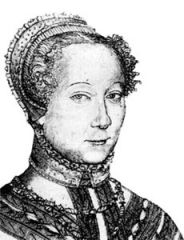
la plus grande poétesse de la Renaissance. Fille d’un riche cordier (ropemaker) de la région de Lyon, Louise reçoit une éducation exceptionnelle. Elle apprend la broderie, le chant, le luth mais également le latin, l’italien, quelques rudiments de grec, et enfin les arts des armes
|
|
|
Le Lai du Laustic
|
Marie de France
|
|
|
Des Cannibales
|
Montaigne
|
|
|
Le Printemps
|
Charles d'Orleans
|
|
|
Heureux Qui, Comme Ulysse...
|
du Bellay
|
|
|
La Cité des Dames
|
Christine de Pizan
|
|
|
Gargantua
|
Rabelais
|
|
|
Les 15 Joies de Mariage
|
Anonymous
|
|
|
Ode à Cassandre
|
Ronsard
|
|
|
Je Vis, Je meurs
|
Louise Labé
|

